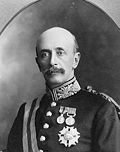 | |
 The old venue for the Hall of Fame and Museum in 2007 | |
 | |
| Established | 1972 |
|---|---|
| Location | Tim Hortons Field 64 Melrose Avenue North, Hamilton, Ontario, Canada |
| Type | Canadian football museum |
| Executive director | Eric Noivo |
| Website | www.cfhof.ca |
The Canadian Football Hall of Fame (CFHOF) is a not-for-profit corporation, located in Hamilton, Ontario, that celebrates achievements in Canadian football. It is maintained by the Canadian Football League (CFL). It includes displays about the CFL, Canadian university football and Canadian junior football history. [1]
Contents
- History
- Canadian Football Hall of Famers
- A
- B
- C
- D
- E
- F
- G
- H
- I
- J
- K
- L
- M
- N
- O
- P
- Q
- R
- S
- T
- U
- V
- W
- Y
- Z
- Football reporters of Canada
- Inductees
- Hall of Fame Game
- See also
- References
- External links
The Hall previously had a main feature in the central portion of the museum where the metal busts of inducted members were displayed prior to the physical building being closed. There were also featured displays that highlight each CFL team's history, and an interactive field goal kicking exhibit. The CFHOF is currently changing to a de-centralized model, which does not include a main museum building.
Once during every CFL season, the Hall sponsors the induction ceremony of former players. Included in the "Hall of Fame Weekend" is a regular season game, usually (but not always) affiliated with the Hamilton Tiger-Cats. Traditionally, the inducted players will come to the Hall and make an acceptance speech in front of the building where their newly sculpted bust is unveiled. A player must be retired from the game for at least three years before being eligible for consideration. [2] A Hall of Fame voting committee is composed of sports writers, selected CFL executives and inducted members. [3]







